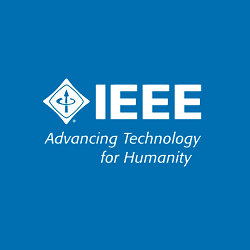دانلود رایگان ترجمه مقاله مکان های مشترک و تصمیم گیری های اعزام برای خدمات اورژانس پزشکی – الزویر ۲۰۱۳
دانلود رایگان مقاله انگلیسی تصمیمات مکان یابی و ارسال مشترک برای خدمات فوریتهای پزشکی به همراه ترجمه فارسی
| عنوان فارسی مقاله: | تصمیمات مکان یابی و ارسال مشترک برای خدمات فوریتهای پزشکی |
| عنوان انگلیسی مقاله: | Joint location and dispatching decisions for Emergency Medical Services |
| رشته های مرتبط: | مهندسی صنایع و کامپیوتر، مهندسی الگوریتم ها و محاسبات، هوش مصنوعی و بهینه سازی سیستم ها |
| فرمت مقالات رایگان | مقالات انگلیسی و ترجمه های فارسی رایگان با فرمت PDF میباشند |
| کیفیت ترجمه | کیفیت ترجمه این مقاله خوب میباشد |
| توضیحات | ترجمه این مقاله به صورت خلاصه انجام شده است. |
| نشریه | الزویر – Elsevier |
| کد محصول | f411 |
|
مقاله انگلیسی رایگان (PDF) |
دانلود رایگان مقاله انگلیسی |
|
ترجمه فارسی رایگان (PDF) |
دانلود رایگان ترجمه مقاله |
|
خرید ترجمه با فرمت ورد |
خرید ترجمه مقاله با فرمت ورد |
| جستجوی ترجمه مقالات | جستجوی ترجمه مقالات مهندسی کامپیوتر |
|
بخشی از ترجمه فارسی مقاله: ۱- مقدمه |
|
بخشی از مقاله انگلیسی: ۱٫ Introduction Emergency Medical Service (EMS) systems are a public service that provides out-of-hospital acute care and transport to a place of definitive care, to patients with illnesses and injuries that constitute a medical emergency. The ultimate goal of EMS systems is to save lives. The ability of these systems to do this effectively is impacted by several resource allocation decisions including location of servers, districting of demand zones and dispatching rules for the servers. Common objectives are minimizing the mean response time and/or maximizing coverage. The relationship between minimizing response time and improving survivability has been reported by several works such as Sanchez-Mangas, García-Ferrer, de Juan, and Arroyo (2010) and McLay and Mayorga (2010, 2011). A demand zone is said to be covered if there is at least one facility within a predefined distance/time threshold from the demand zone. The concept of coverage is related to the availability of a satisfactory facility rather than the best possible one (Farahani, Asgari, Heidari, Hosseininia, & Goh, 2012). Li, Zhao, Zhu, and Wyatt (2011) pointed out that the coverage maximization approach is the most widely used by practitioners, researchers and regulators. Traditionally, location and dispatching decisions have been approached separately, even though various studies have shown that the servers’ busy probabilities (and therefore the response time and coverage, among other performance indicators) are sensitive to the server locations and the choice of server dispatching strategies (Batta, Dolan, & Krishnamurthy, 1989; Larson & Odoni, 1981). Ambulance dispatch is the process of assigning a particular ambulance to answer an emergency call. An ambulance dispatch policy can be formed using various dispatch methods and there is no single policy that fits all systems (Li et al., 2011). The same authors emphasized that a dispatch policy has to be designed to fulfill the particular objectives and performance indicators defined by EMS providers and regulators. In our work we consider dispatch policies in which there is a single list associated with each demand zone that ranks the available servers (ambulances), or a subset of them, in order of dispatch preference. This type of list is commonly referred to as a contingency table. The most common dispatching policy for EMS calls is rather simple in that the closest idle vehicle is usually dispatched to attend the call (Andersson & Varbrand, 2006; Goldberg, 2004). The rationale behind that policy is related to the idea of having the objective of minimizing the mean system response time. The works on allocation of distinguishable servers by Jarvis (1981) and Katehakis and Levine (1986) pointed out that under light traffic conditions using a myopic allocation policy (i.e. assigning always the closest available sever) will lead to an optimal solution, when the objective is to minimize the long run average cost (response time). For heavy traffic the same works mentioned that the optimal policy can deviate from the myopic policy. However, even in the latter case using the myopic policy still might lead to solutions that are close the optimum (Katehakis & Levine, 1986). Related literature applied to EMS systems planning included arguments against the closest dispatching rule as a way to minimize the response time. Arguments were made originally by Carter, Chaiken, and Ignall (1972) and thereafter supported by Cuninghame-Green and Harries (1988) and Repede and Bernardo (1994). In the referred works the locations of the servers are assumed to be known. We have not found references addressing the relationship between a myopic dispatching policy and expected coverage. There is usually a trade-off between response time and coverage, so that improving one of them implies a sacrifice in the other. In this work, first we present a mathematical model that integrates the location and dispatching decisions for an EMS system. It is a non-linear mixed integer optimization model in which even generating some of the equations is computationally intensive, therefore making it hard to solve. The Hypercube model is used providing an exact model of the stochastic queuing dynamics. The mathematical model is accompanied by the analysis of randomly generated small instances whose purpose is twofold: (i) given the small size it is possible to fully enumerate all feasible solutions hence also identifying the optimal, that can be used later for comparison purposes against faster/smarter solution strategies than enumeration; and (ii) after solving a variety of random instances it is also possible to point out some general trends observed in the optimal solutions (with respect to response time and coverage). Second, we present an optimization framework to solve the joint location and dispatching problem based on Genetic Algorithms (GAs). We present a heuristic solution procedure to solve the exact model of the system. Our work is different from previous approaches to the problem, for although we assume the general form of the dispatching policy, as a fixed preference list, we do not assume a priori any particular dispatching order (based on distance, for example). Instead, we model the location and dispatching decisions in a single mathematical model, and develop an optimization framework for its solution. In fact, since a district is the union of the demand zones assigned to a particular server, it can be said that an indirect result of our model is also a districting strategy: for each available server, all the zones having it as its first preferred server would form the server’s district. Our findings are that in fact the common dispatching rule based on the closest available server leads to the best solutions when the objective is minimizing the mean response time and locations are optimized simultaneously. Conversely, if the objective is maximizing expected coverage, then the optimal solution could deviate from the use of the closest dispatching rule. However, the best solutions based on coverage offer an increase of that indicator (with respect to the coverage attained by minimizing the mean response time) that is rather small (3.15% average increase – ۹۵% CI: 2.75–۳٫۵۵%) compared to the sacrifice in response time (65.2% average increase – ۹۵% CI: 56.33–۷۴٫۲۴%). Although these numbers correspond to the average results for the small instances, bigger instances showed similar behavior. The optimization procedure proposed has consistently obtained good solutions, i.e. within 1% gap compared to the best solutions obtained by full or partial enumeration procedures, which are computationally more intensive. While our main goal was the development of the optimization framework for the solution of the joint location/dispatching problem, we discovered that little benefit can be gained from the integrated approach when using the two most commonly used criteria, namely response time and expected coverage. Thus we considered two additional criteria related to fairness, and we used one of them to illustrate the potential benefits of the joint approach. In particular we tested the variance of the individual response times as a measure of fairness from the point of view of the users of the system (demand zones). We found that in this case using a myopic policy would result in a potential deviation from the optimal policy aimed at reducing disparities, as measure by the variance of the response times. We also illustrate the trade-offs among the presented optimization criteria. The rest of the paper is organized as follows. In Section 2 we provide the presentation of the problem as well as a review of related literature. Next, in Section 3 we introduce the mathematical model. Section 4 presents a small case study, as well as a summary of its results and implications. Section 5 provides a detailed description of the optimization framework based on GAs and Section 6 introduces the case studies to which the optimization procedure is applied, as well as the results obtained. The last two sections, 7 and 8 are the discussion of the results and the conclusions, respectively. As part of the conclusions possible extensions of the present work are mentioned. |


